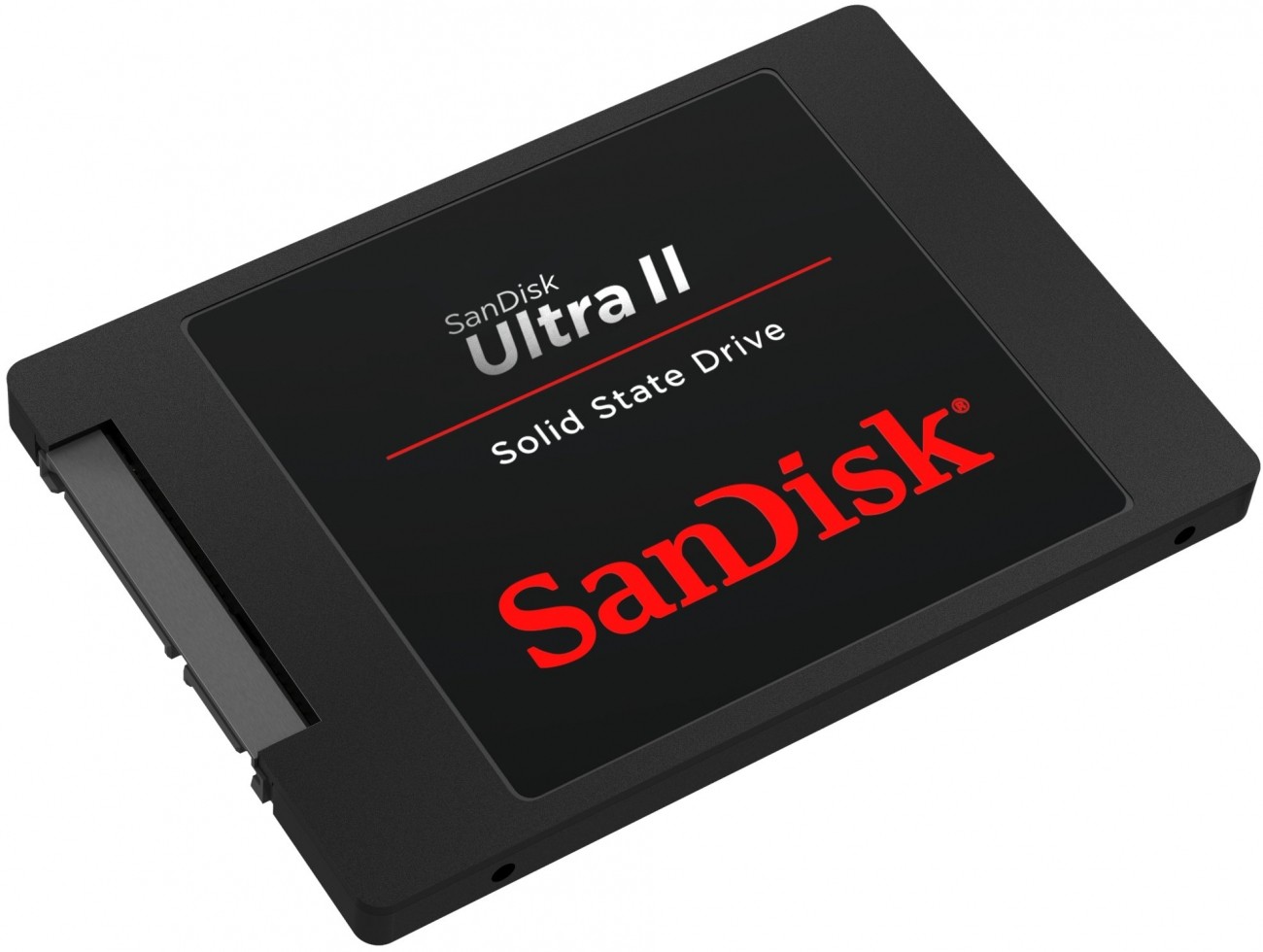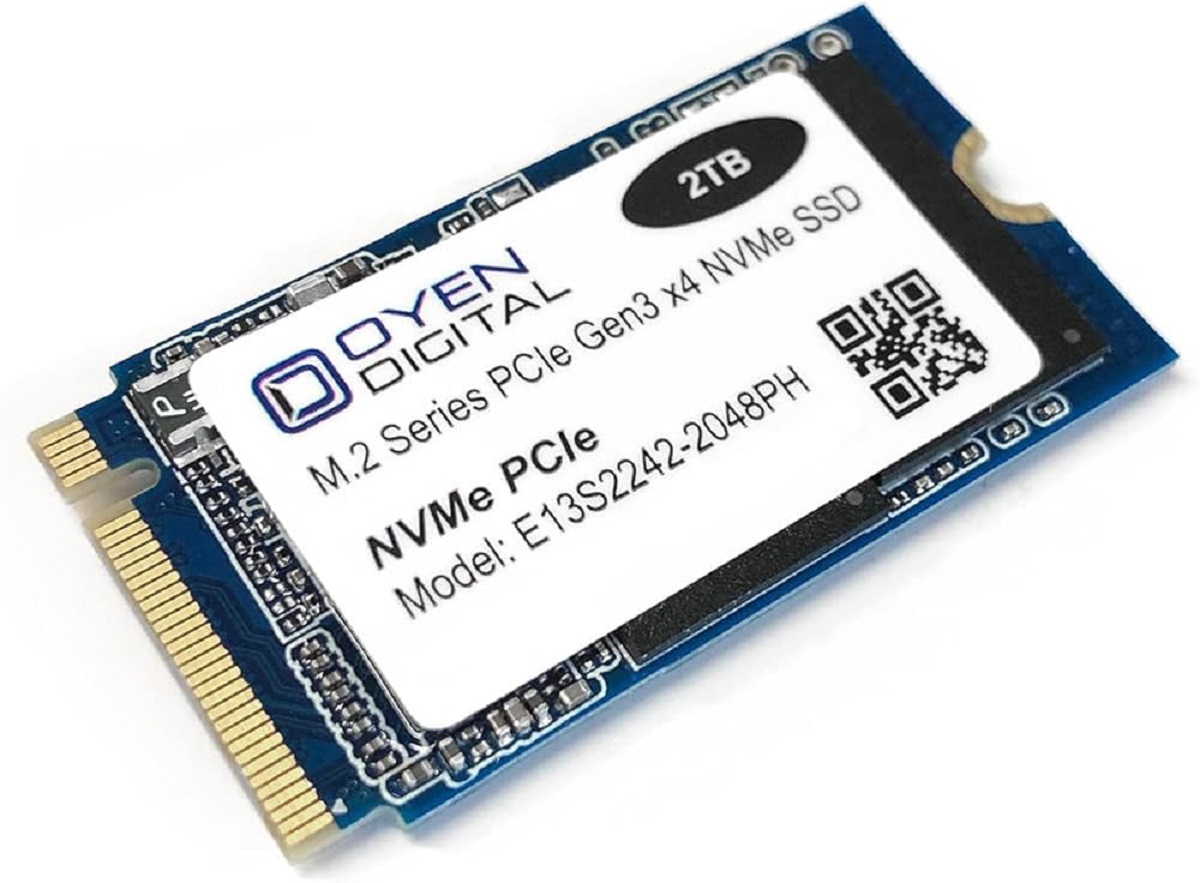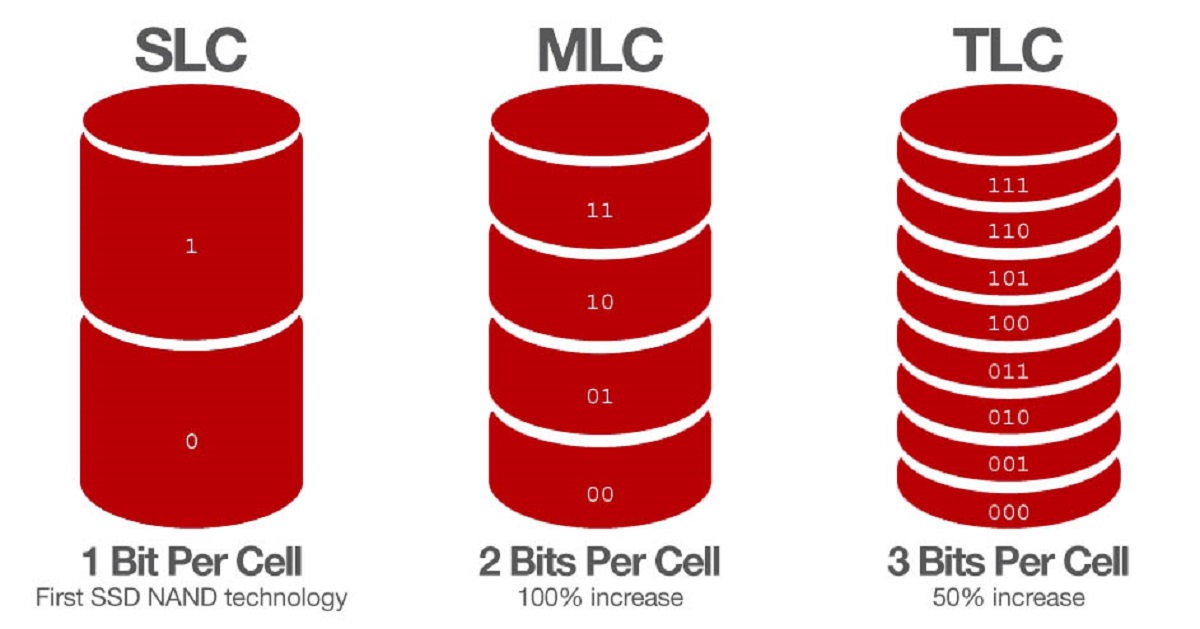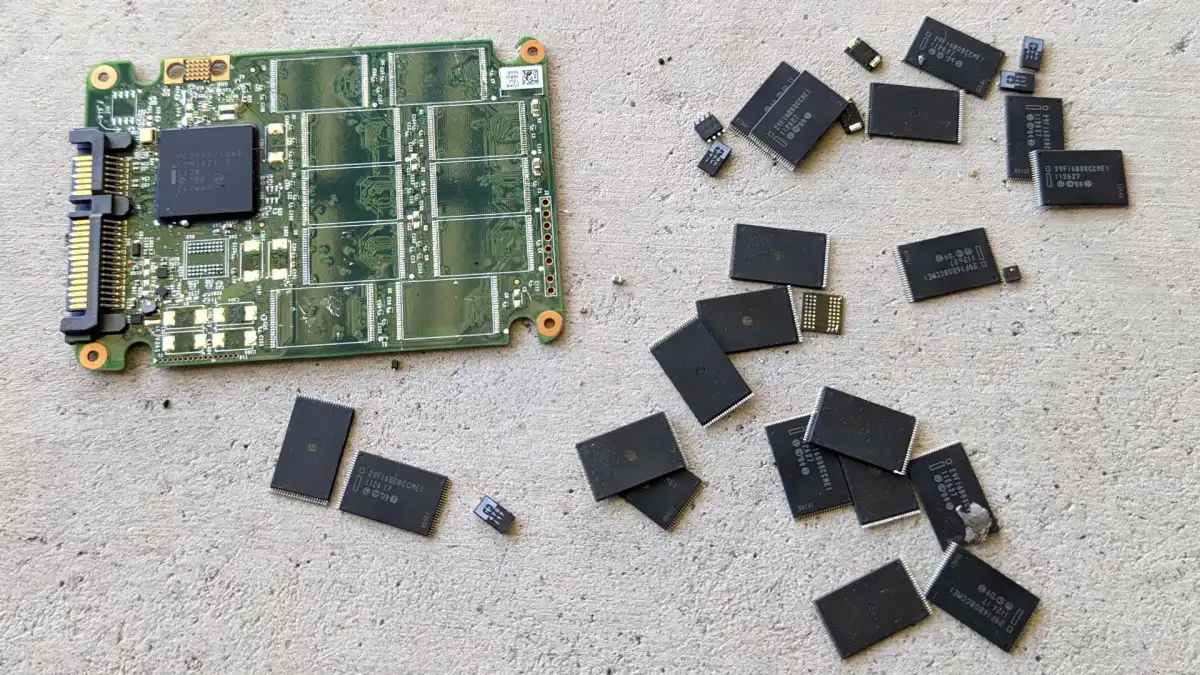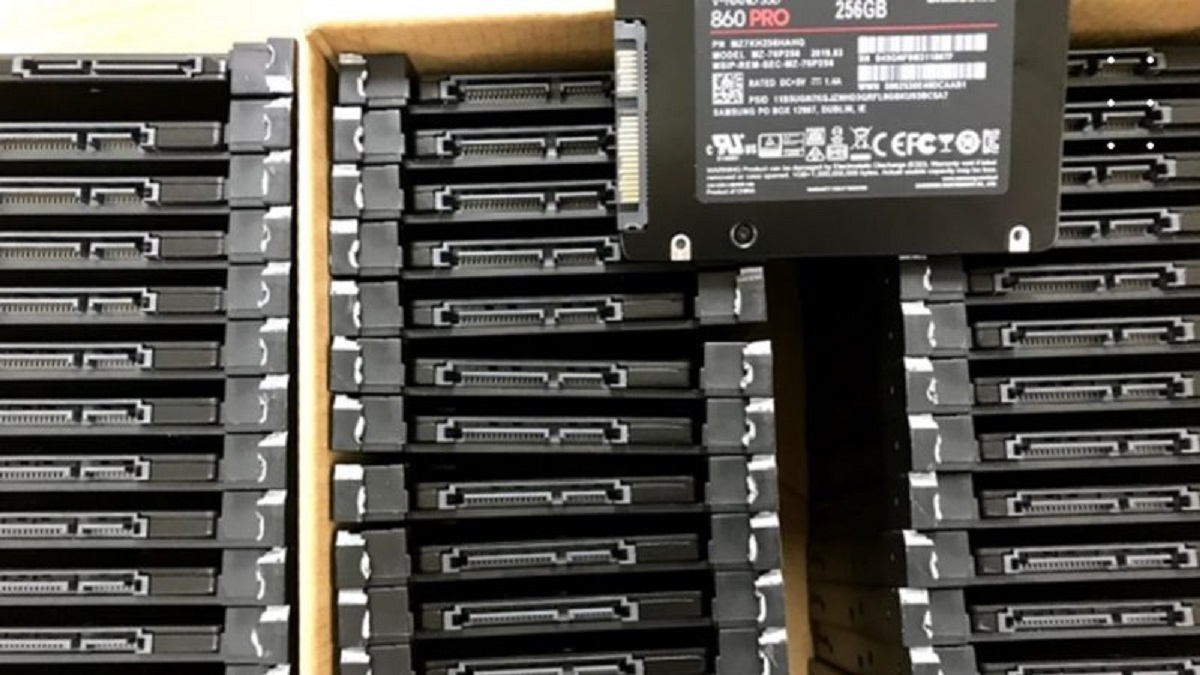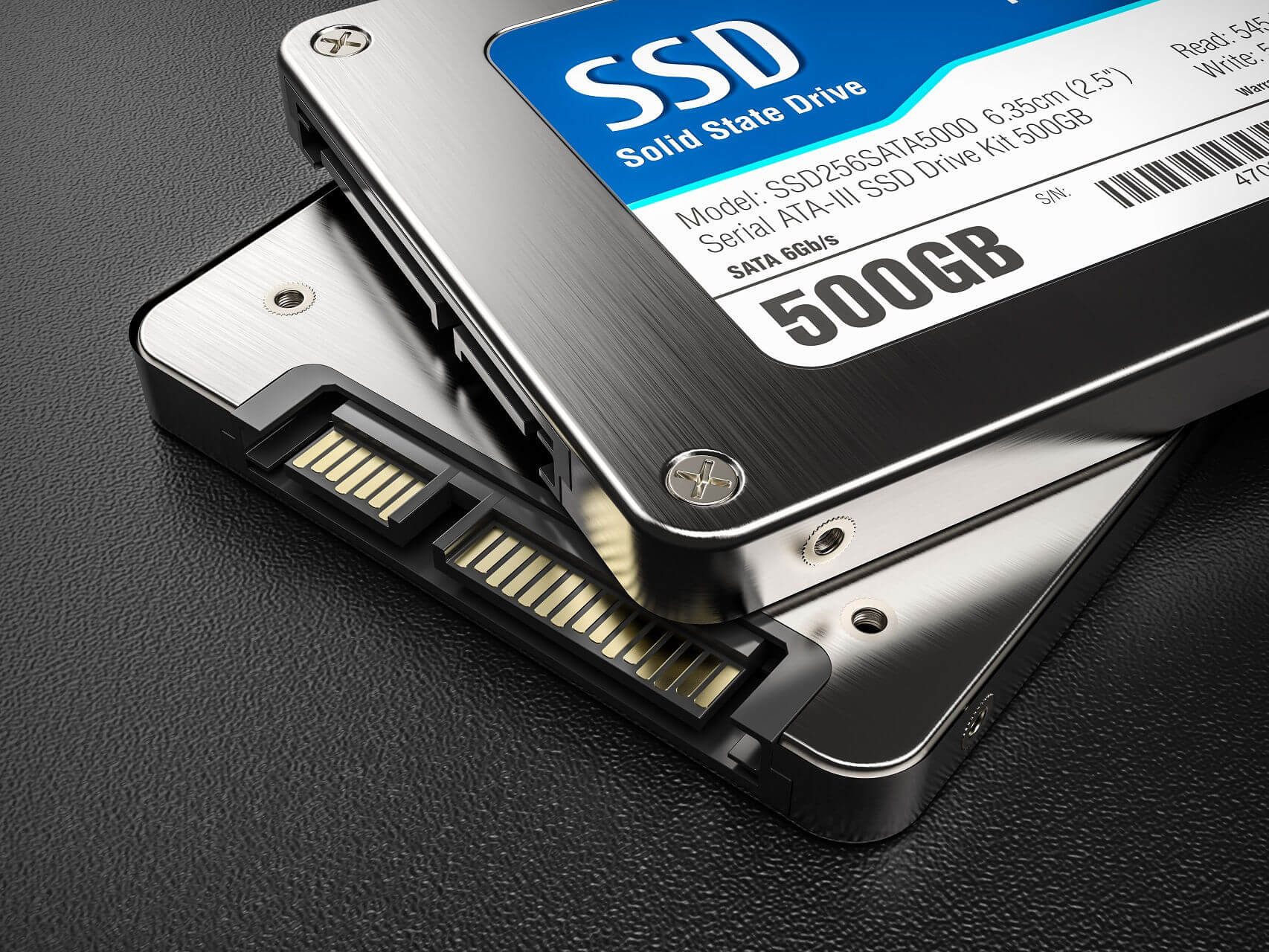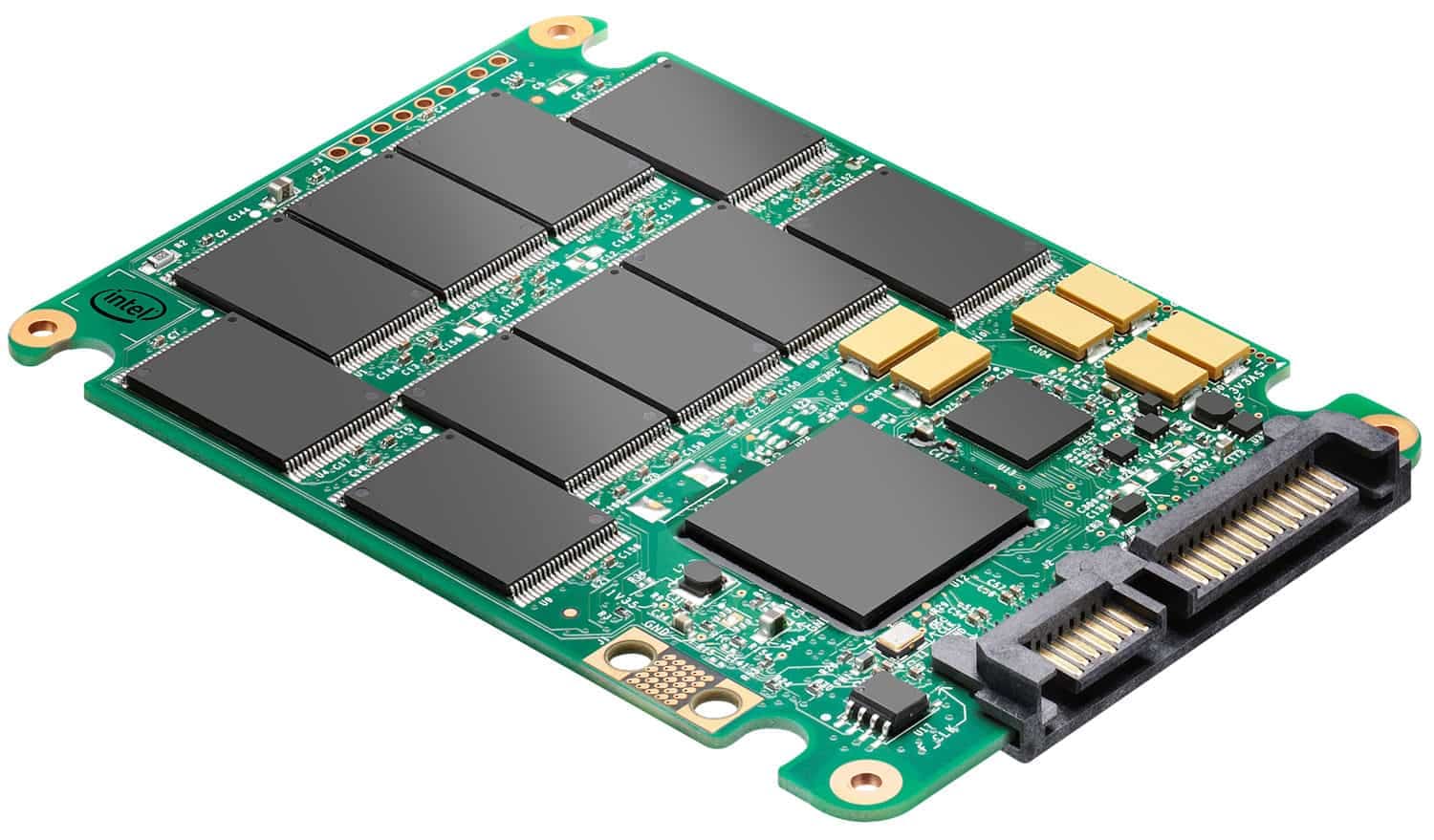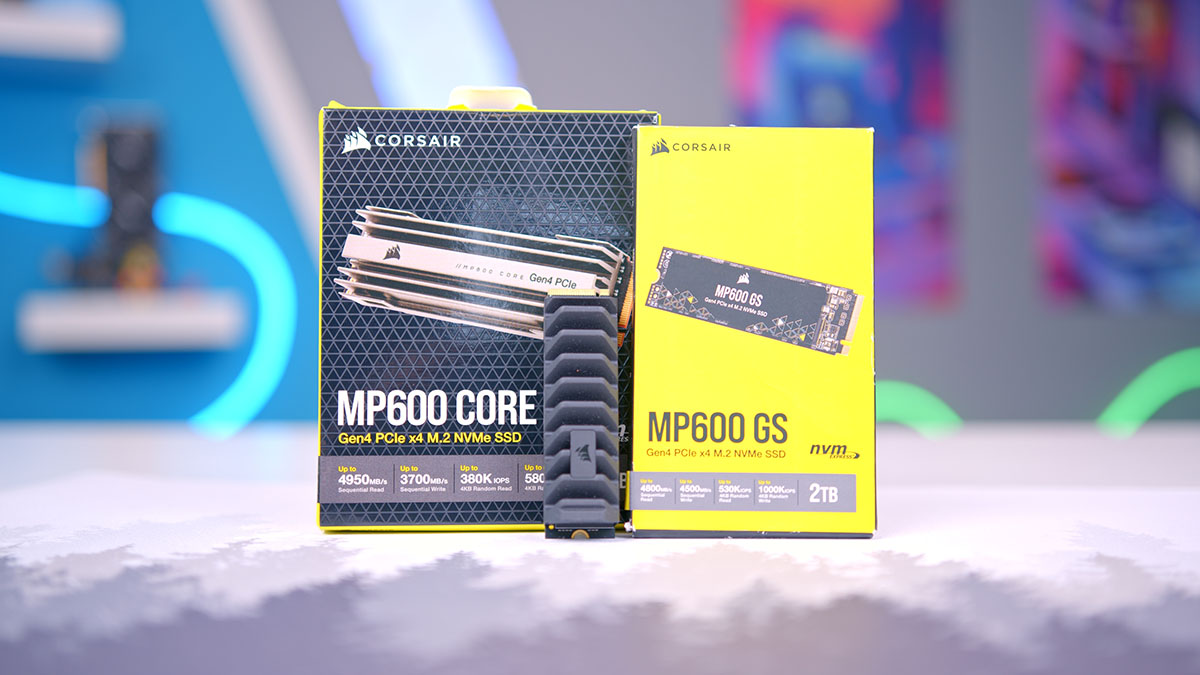Introduction
Welcome to the world of Solid State Drives (SSDs), where speed, performance, and storage efficiency are of utmost importance. When it comes to SSDs, there are various types available in the market, each with its own unique features and advantages. One such type is the TLC (Triple-Level Cell) SSD.
TLC SSDs have gained popularity in recent years due to their affordability and high storage capacity. They offer a cost-effective solution for users who are looking to upgrade their traditional hard drives and experience faster read and write speeds. In this article, we will explore what TLC SSDs are, how they function, their advantages and disadvantages, and how they compare to other types of SSDs in the market.
TLC SSDs have revolutionized the storage industry by packing more data into each memory cell. Unlike traditional hard drives, which use spinning platters and magnetic heads to read and write data, SSDs store data electronically on flash memory chips. TLC SSDs utilize three bits per cell, allowing them to store more data compared to Single-Level Cell (SLC) and Multi-Level Cell (MLC) SSDs, which use one and two bits per cell, respectively.
While TLC SSDs offer higher storage capacity and lower cost per gigabyte, they do have some trade-offs. The complexity of storing three bits per cell leads to slower performance and reduced endurance compared to SLC and MLC SSDs. However, advancements in technology and improved controller algorithms have helped mitigate these issues to a great extent.
In the next sections, we will delve deeper into how TLC SSDs work, discuss their advantages and disadvantages, and compare them to other types of SSDs available in the market. So, let’s dive in and explore the world of TLC SSDs!
What is TLC SSD?
TLC SSD stands for Triple-Level Cell Solid State Drive. It is a type of solid state drive that utilizes a specific type of flash memory to store data. The “triple-level” in TLC refers to the number of bits that can be stored in each memory cell. Unlike Single-Level Cell (SLC) and Multi-Level Cell (MLC) SSDs, which store one and two bits per cell respectively, TLC SSDs can store three bits per cell. This increases the storage capacity of the drive, making it a popular choice for consumers looking for higher storage at a lower cost.
TLC SSDs achieve this higher storage capacity by utilizing a more complex data storage method. Each bit in a TLC SSD cell can represent one of eight different voltage levels, allowing for a wide range of data storage possibilities. The controller in the SSD is responsible for interpreting these voltage levels and translating them into meaningful data.
The increased storage capacity of TLC SSDs comes with some trade-offs. One of the main trade-offs is reduced performance compared to SLC and MLC SSDs. Since there are more voltage levels to interpret, reading and writing data on a TLC SSD can take longer. However, advancements in controller technology and firmware algorithms have greatly improved TLC SSD performance, making them more comparable to other SSD types.
Another trade-off is reduced endurance. Each memory cell in a TLC SSD can only tolerate a certain number of program-erase cycles before it starts to degrade. Compared to SLC and MLC SSDs, which have higher endurance, TLC SSDs may not be as suitable for heavy workloads or applications that involve frequent data writes. However, for typical consumer use, the endurance of TLC SSDs is still sufficient for everyday tasks and applications.
Overall, TLC SSDs provide an excellent balance of storage capacity and affordability. They are a viable option for consumers who require higher storage without breaking the bank. TLC SSDs continue to evolve and improve, becoming a more prevalent and popular choice in the SSD market.
How does TLC SSD work?
Understanding how TLC SSDs work requires knowledge of how flash memory operates. Flash memory is a type of non-volatile storage that retains data even when the power is turned off. It is composed of cells that can hold electrical charges, representing either a digital 0 or 1. In the case of TLC SSDs, each cell can store three bits of information.
To write data onto a TLC SSD, the controller sends electrical pulses to the flash memory cells, charging them to specific voltage levels that correspond to the desired bit values. These voltage levels are carefully calibrated and monitored to ensure accurate data storage. When reading data from the TLC SSD, the controller analyzes the voltage levels in the cells and translates them back into binary data for the computer to use.
One of the challenges with TLC SSDs is the potential for data errors due to the increased number of voltage levels used. The multiple charge levels can be susceptible to interference and noise, making it more difficult to accurately determine the stored bits. To address this, TLC SSDs employ advanced error correction techniques, such as error correction codes (ECC), to detect and correct any errors that may occur during data access.
To extend the overall lifespan of a TLC SSD, wear-leveling algorithms are implemented. These algorithms distribute data more evenly across the memory cells, preventing frequent writes to specific cells and ensuring that all cells wear out at a similar rate. Additionally, garbage collection and TRIM commands are used to efficiently manage and optimize the allocation of data within the SSD.
The controller of a TLC SSD plays a pivotal role in managing the data storage and retrieval processes. It oversees tasks such as wear leveling, error correction, and managing the communication between the SSD and the host system. Advanced controllers leverage sophisticated firmware and algorithms to maximize performance and reliability.
Overall, TLC SSDs offer a balance between storage capacity and cost-effectiveness. They utilize innovative methods, such as storing three bits per cell, advanced error correction, wear leveling, and intelligent algorithms to provide reliable and efficient data storage solutions. These advancements have propelled TLC SSDs to be a popular choice for consumers and have contributed to the ongoing development and improvement of solid-state drive technology.
Advantages of TLC SSD
TLC SSDs offer several advantages that make them an attractive choice for consumers seeking high-capacity storage solutions at a more affordable price point. Here are some of the key advantages of TLC SSDs:
- Cost-effective: One of the primary advantages of TLC SSDs is their cost-effectiveness. Compared to Single-Level Cell (SLC) and Multi-Level Cell (MLC) SSDs, TLC SSDs tend to have a lower cost per gigabyte. This makes them more accessible to a wider range of consumers, allowing them to enjoy the benefits of solid-state storage without breaking the bank.
- High storage capacity: TLC SSDs are capable of storing more data compared to SLC and MLC SSDs. With the ability to store three bits per cell, TLC SSDs offer greater storage density, allowing users to store larger amounts of data, including large files, applications, and multimedia content, without compromising on performance.
- Improved performance: While TLC SSDs may not offer the same level of performance as SLC or MLC SSDs, advancements in technology and controller algorithms have significantly improved their performance. TLC SSDs now offer faster data transfer speeds, shorter response times, and improved overall system responsiveness compared to traditional hard drives.
- Energy-efficient: TLC SSDs consume less power compared to traditional hard drives. This energy efficiency not only helps to reduce electricity costs but also contributes to longer battery life in laptops and mobile devices, allowing users to work or play for extended periods without the need for frequent recharging.
- Reliability and durability: Despite concerns about endurance due to their multi-level cell structure, TLC SSDs are designed to offer reliable and durable performance. Advanced firmware and wear-leveling algorithms help distribute data evenly across the drive, reducing wear on specific cells and extending the lifespan of the SSD. Additionally, ECC (Error Correction Codes) and other error correction techniques ensure data integrity, minimizing the risk of data corruption or loss.
Overall, TLC SSDs provide an excellent balance of affordability, storage capacity, and performance. They are an ideal choice for everyday computing needs, offering faster data access, increased storage space, and improved system responsiveness. With ongoing advancements in technology, TLC SSDs continue to become more reliable, efficient, and cost-effective, driving their widespread adoption in the market.
Disadvantages of TLC SSD
While TLC SSDs offer several advantages, they also have a few disadvantages that are important to consider when choosing storage options. Here are some of the key disadvantages of TLC SSDs:
- Reduced endurance: TLC SSDs have lower endurance compared to Single-Level Cell (SLC) and Multi-Level Cell (MLC) SSDs. Each memory cell in a TLC SSD can endure a limited number of program-erase cycles before it starts to degrade. Frequent and intensive data writes, such as in high-workload scenarios or constant video editing, can put strain on the SSD and potentially decrease its lifespan. However, for typical consumer usage, the endurance of TLC SSDs is still sufficient for everyday tasks.
- Slower performance: Compared to SLC and MLC SSDs, TLC SSDs generally have slower performance. The complex data storage method, involving three bits per cell, requires more precise voltage level interpretation, resulting in longer read and write times. While advancements in controller technology have significantly improved TLC SSD performance, they may still lag behind other types of SSDs in terms of raw speed. However, for most day-to-day tasks and regular use, the performance difference may not be noticeable.
- Higher susceptibility to data errors: The use of multiple voltage levels in TLC SSDs increases the likelihood of data errors. The more voltage levels that need to be precisely interpreted, the higher the chance of data corruption or errors occurring during data access. However, advanced error correction techniques, such as Error Correction Codes (ECC), are implemented in TLC SSDs to detect and correct any errors that may occur.
- Limited compatibility: While TLC SSDs are widely compatible with most modern systems, there may be instances where older hardware or operating systems do not fully support TLC SSD technology. It is essential to check the compatibility requirements of your system before purchasing a TLC SSD to ensure it will work optimally with your setup.
- Higher chance of write amplification: TLC SSDs are more susceptible to write amplification, a phenomenon where the SSD writes more data than necessary due to how data is managed at the block level. Write amplification can lead to decreased write performance and reduced SSD lifespan. However, modern controllers and firmware algorithms have implemented techniques to mitigate write amplification and improve overall SSD efficiency.
While TLC SSDs have some drawbacks, they still offer a compelling storage solution for many users. The key is to assess your specific needs and usage patterns to determine if the trade-offs associated with TLC SSDs align with your requirements. When properly utilized and maintained, TLC SSDs can provide reliable and efficient storage for a wide range of applications, making them a popular choice in the market.
TLC SSD vs. other types of SSDs
When it comes to solid-state drives (SSDs), there are different types available in the market, each with its own characteristics and benefits. Let’s compare and contrast TLC SSDs with other types of SSDs to understand their differences and determine which might be the best fit for your needs.
SLC (Single-Level Cell) SSDs: SLC SSDs are known for their high performance and endurance. They store only one bit of data per memory cell, which allows for faster reading and writing speeds. SLC SSDs also have significantly higher endurance, making them ideal for demanding workloads and applications that involve frequent data writes. However, SLC SSDs are more expensive and offer lower storage capacity compared to TLC SSDs.
MLC (Multi-Level Cell) SSDs: MLC SSDs strike a balance between SLC and TLC SSDs in terms of performance, endurance, and cost. MLC SSDs store two bits of data per memory cell, giving them higher storage capacity than SLC SSDs but at a slightly lower cost per gigabyte compared to TLC SSDs. MLC SSDs are suitable for a wide range of applications and strike a good balance between cost and performance for most users.
TLC (Triple-Level Cell) SSDs: TLC SSDs have gained popularity due to their affordability and high storage capacity. They store three bits of data per memory cell, making them more cost-effective but with a trade-off in terms of endurance and performance compared to SLC and MLC SSDs. TLC SSDs are ideal for everyday use, where large storage capacity is required without breaking the bank. Advancements in controller technology have improved TLC SSD performance, making them more comparable to other SSD types.
While SLC and MLC SSDs excel in terms of performance and endurance, they come with a higher price tag. For users with specific requirements, such as heavy workloads and critical applications, SLC or MLC SSDs might be the preferred choice. On the other hand, if you’re looking for a more cost-effective solution with ample storage capacity for regular usage, TLC SSDs offer a compelling option.
It’s important to choose the right SSD type based on your specific needs and budget. Consider factors such as your usage patterns, workload requirements, and the importance of performance and endurance. And remember, whichever type of SSD you choose, all SSDs provide significant advantages over traditional hard drives, including faster data access, improved system responsiveness, and lower power consumption.
TLC SSD in the market
TLC (Triple-Level Cell) SSDs have made a significant impact in the storage market, providing consumers with a cost-effective and high-capacity storage solution. Over the years, TLC SSD technology has evolved and become more prevalent, with a wide range of options available in the market.
When TLC SSDs were first introduced, there were concerns about their endurance and performance compared to Single-Level Cell (SLC) and Multi-Level Cell (MLC) SSDs. However, advancements in technology and firmware algorithms have addressed many of these concerns, making TLC SSDs a reliable choice for everyday use.
One of the primary reasons for the popularity of TLC SSDs is their affordability. TLC SSDs offer a lower cost per gigabyte compared to SLC and MLC SSDs, making them more accessible to a wider range of consumers. This affordability has driven the demand for TLC SSDs across various market segments, from budget-conscious customers to small businesses and enterprises looking to upgrade their storage systems.
Major storage manufacturers have embraced TLC SSD technology and now offer a wide selection of models with varying capacities and performance levels. These include reputable brands such as Samsung, Western Digital, Kingston, Crucial, and many more. Consumers have the flexibility to choose TLC SSDs that align with their specific storage capacity requirements, performance needs, and budget considerations.
TLC SSDs have also become increasingly popular in the gaming and multimedia industries. Gamers and content creators benefit from the high storage capacity of TLC SSDs as they can store large games, applications, and media projects without sacrificing performance. The faster loading times and improved overall system responsiveness enhance the gaming and content creation experience, allowing for smoother gameplay and faster rendering or editing.
As TLC SSD technology continues to advance, we can expect even greater storage capacities, improved endurance, and faster speeds. Manufacturers are constantly pushing the boundaries to provide better firmware and controller optimizations, which further enhance the performance and reliability of TLC SSDs.
In summary, TLC SSDs have carved a significant presence in the storage market, offering a cost-effective solution with high storage capacity. They have addressed initial concerns about endurance and performance, making them a reliable choice for everyday use. With a wide range of options available from various manufacturers, TLC SSDs continue to gain popularity among consumers, businesses, gamers, and multimedia professionals alike.
Conclusion
TLC (Triple-Level Cell) SSDs have revolutionized the storage industry, providing a cost-effective and high-capacity storage solution for consumers and businesses alike. With their ability to store three bits of data per memory cell, TLC SSDs offer greater storage density, allowing for larger amounts of data to be stored at a lower cost per gigabyte compared to other SSD types.
While TLC SSDs may have some trade-offs in terms of performance and endurance compared to Single-Level Cell (SLC) and Multi-Level Cell (MLC) SSDs, advancements in technology and controller algorithms have greatly improved TLC SSD performance, making them a viable choice for everyday use. TLC SSDs have become increasingly popular in the market, with a wide range of options available from reputable manufacturers.
The affordability and high storage capacity of TLC SSDs have played a significant role in their widespread adoption. They are an ideal choice for consumers looking to upgrade their storage systems without breaking the bank, providing faster data access, improved system responsiveness, and energy efficiency.
As TLC SSD technology continues to evolve, we can expect further advancements, including higher storage capacities, improved endurance, and faster speeds. Manufacturers are constantly improving firmware and controller optimizations to further enhance the performance and reliability of TLC SSDs.
In conclusion, TLC SSDs have solidified their place as a compelling storage option in the market. Their affordability, high storage capacity, and improving performance make them an attractive choice for everyday computing needs. Whether you’re a budget-conscious consumer, a business looking to upgrade your storage infrastructure, or a gamer and content creator in need of ample storage space, TLC SSDs provide a reliable and cost-effective solution.







